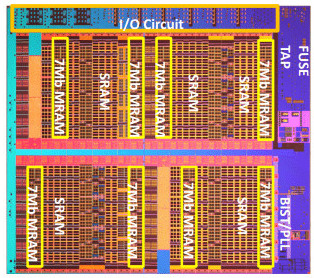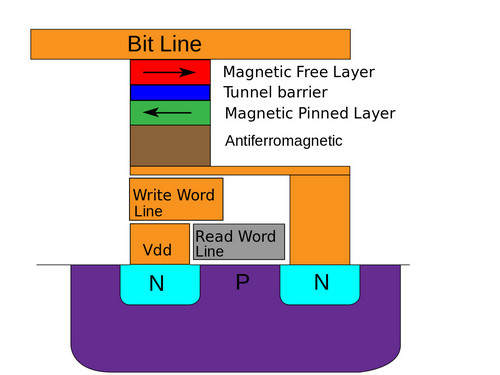Intel is ready to start producing MRAM memory
 So, a fundamentally new kind of computer memory, called the successor of both DRAM and NAND and demonstrated by Samsung and Intel at the end of last year, is beginning to take on the appearance of a real product. At least, one more step has been taken in this direction: according to Intel’s statement, it is soon ready to begin production of MRAM (Magnetoresistive Random Access Memory) on an industrial scale.
So, a fundamentally new kind of computer memory, called the successor of both DRAM and NAND and demonstrated by Samsung and Intel at the end of last year, is beginning to take on the appearance of a real product. At least, one more step has been taken in this direction: according to Intel’s statement, it is soon ready to begin production of MRAM (Magnetoresistive Random Access Memory) on an industrial scale.We will not dwell on the device and the principles of operation of the MRAM-memory - you can find a lot of detailed information at the link above. We note only its main characteristics. So, Intel uses the “write-check-write” scheme and two-stage current measurement technology in order to build perpendicular arrays of STT-MRAM (spin-torque-transfer MRAM) with a capacity of 7 MB created using 22-nm FinFET technology.

MRAM cell diagram
Being a non-volatile memory, MRAM arrays ensure data integrity for up to 10 years at a temperature of 200 ° C, withstand up to 10 6 rewriting cycles and up to 10 12 reading cycles. In addition to high reliability, MRAM demonstrates a surprisingly good level of product yield (only 0.1% rejection), which will undoubtedly affect the cost.
')
We give in the plate other characteristics:
| Technology | 22FFL FinFET |
| Cell type | 1T1MTJ |
| Cell size | 0.0486 µm 2 |
| Volume | 7 MB |
| Density (including ESS) | 10.6 MB / mm 2 |
| Reading time | 4 ns at 0.9 V, 8 ns at 0.6 V |
| Recording time | 10 µs for the end bit |
| Overflow protection | Yes |
The MRAM technology will allow to overcome the achieved limit of the miniaturization of memory elements. In addition, MRAM can be operated in a variety of conditions, which together makes it optimal for various devices of the Internet of things. Resistive RAM (ReRAM) can be used as an inexpensive volatile memory for this kind of devices. This is another type of memory that Intel is actively working on. Here you can also recall the Optane Memory - work in this direction is also in full swing. That's how many kinds it turns out As they say, more memory, good and different.
Source: https://habr.com/ru/post/444540/
All Articles